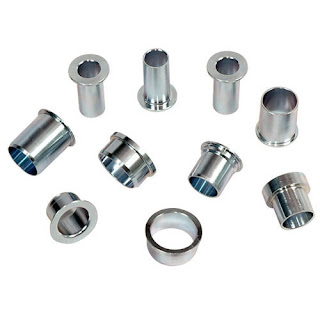Everything You Need to Know About Slip on Flanges
Flanges are used to connect pipes, valves and other equipment in a piping system. Being flexible, it provides easy accessibility for cleaning, modification and inspection. A flange joint consist of flanges, gasket and bolting. All of these components are independent but interrelated to each other in a way.
Bolting is used to connect more flanges and gasket is used between two flanges to provide a seal. In most of the cases of leakage and fire in the processing plants, flanges are the main offender. Although there is a variety of flanges available in the market, selecting that one which suits your requirements and provides zero leakage is an ideal one.

Types of flanges:
Among all the above, slip on flange is one of the most popular flanges. Someone who is new to slip on flange may not understand the dimensions and technicalities behind Slip-on flanges. They can either take help from slip-on flanges manufacturers or can take a brief insight on slip-on flanges from the below points.
Bolting is used to connect more flanges and gasket is used between two flanges to provide a seal. In most of the cases of leakage and fire in the processing plants, flanges are the main offender. Although there is a variety of flanges available in the market, selecting that one which suits your requirements and provides zero leakage is an ideal one.

Types of flanges:
1. Slip on flanges
2. Socket weld flange
3. Threaded flange
4. Blind flange
5. Lap joint flange
6. Welding neck flange
Among all the above, slip on flange is one of the most popular flanges. Someone who is new to slip on flange may not understand the dimensions and technicalities behind Slip-on flanges. They can either take help from slip-on flanges manufacturers or can take a brief insight on slip-on flanges from the below points.
- They can slide at the end of the pipe, therefore, they are called slip-on flanges.
- They are used in low-pressure applications.
- They can be easily welded in different pipes.
Why slip-on flanges are preferred?
- Their initial cost is less as compared to neck flanges
- Slip-on flanges are easy to align
- One size fits all sizes
- For slip-on flanges, fabricators find it easier to cut a pipe
Take measurements of the outer diameter, the inner diameter the bolt circle and the hole diameter of a slip-on flange to get the desired operation.
Find out more about flange exporter in Europe/ North America by visiting http://www.sainiflange.co.in/.
Find out more about flange exporter in Europe/ North America by visiting http://www.sainiflange.co.in/.




Comments
Post a Comment